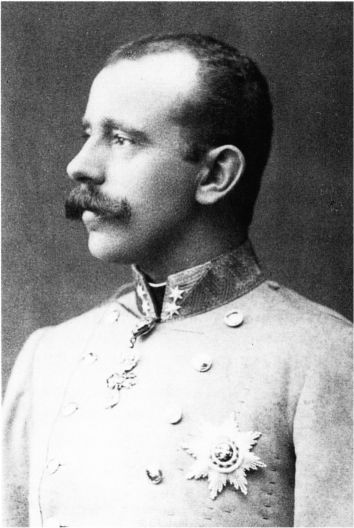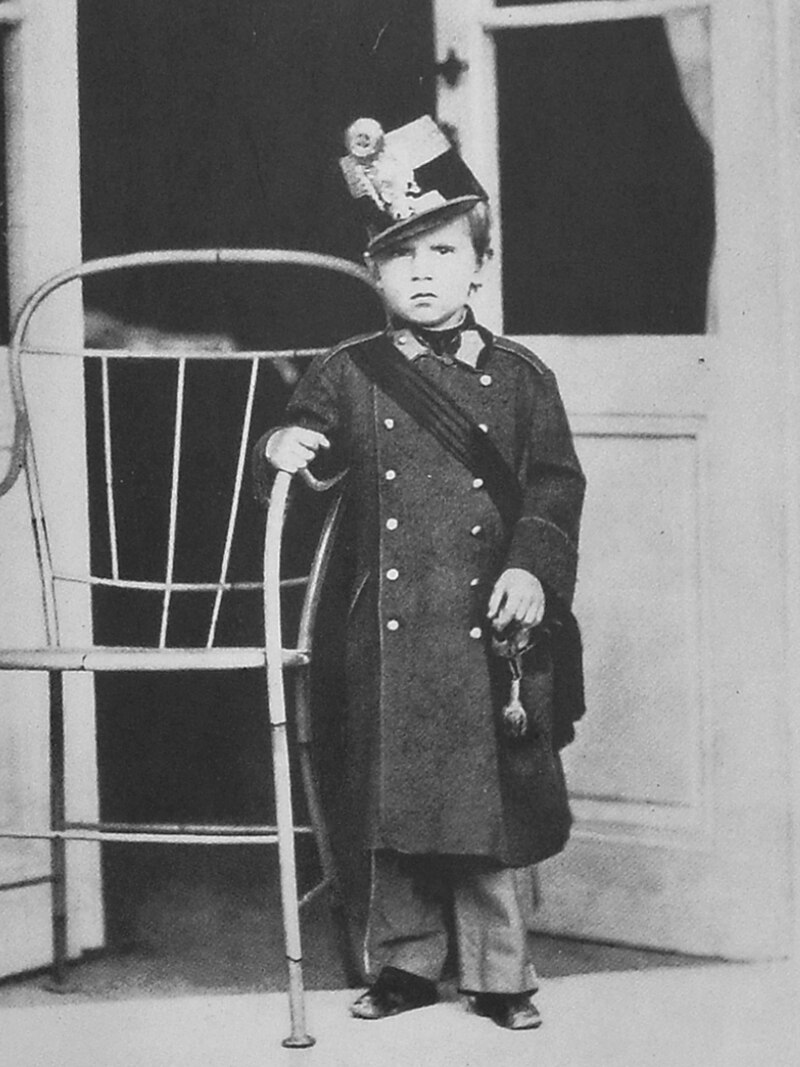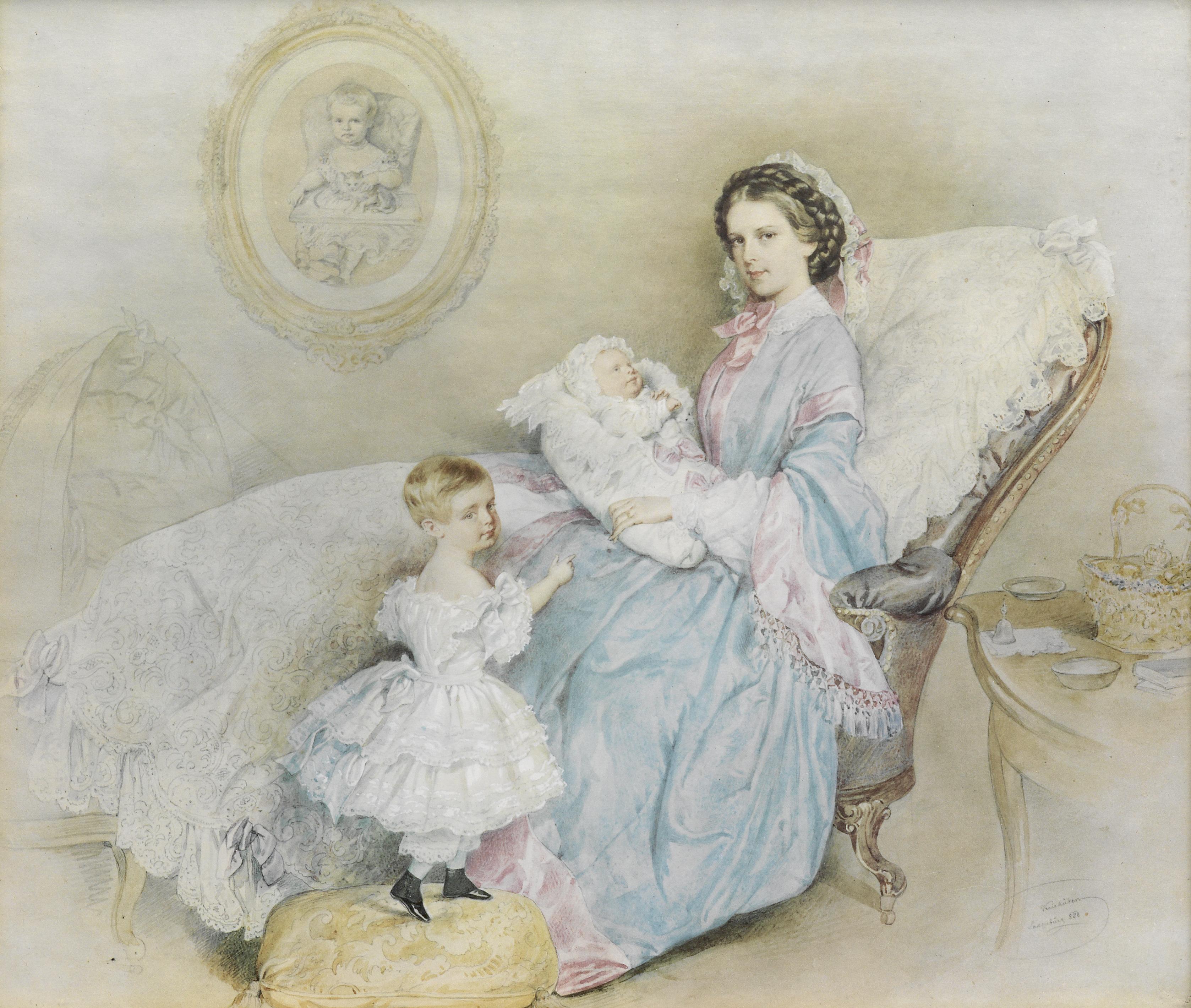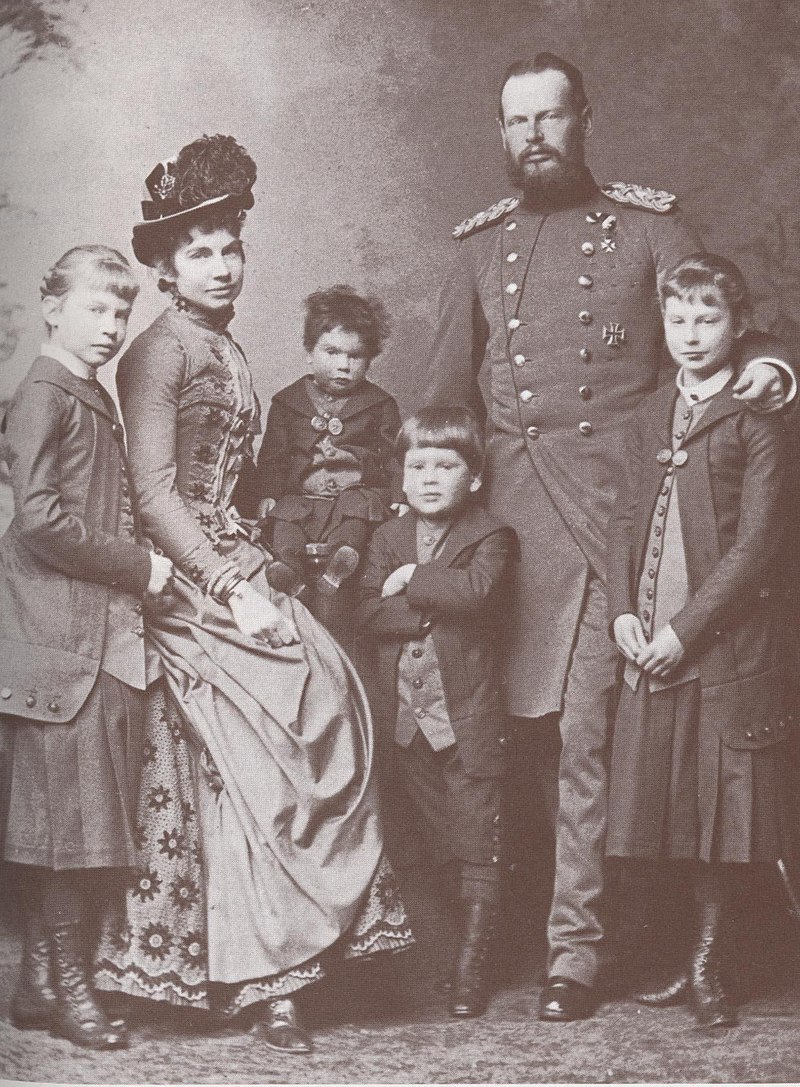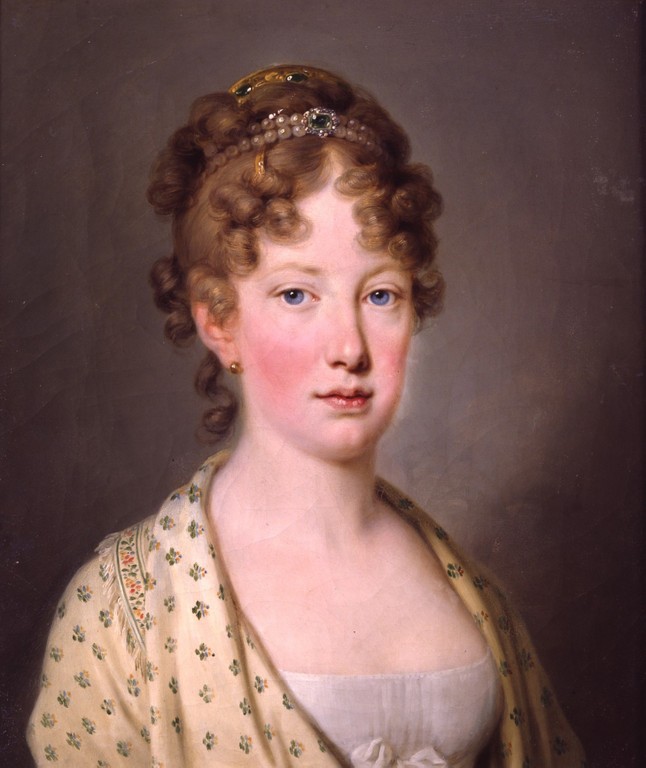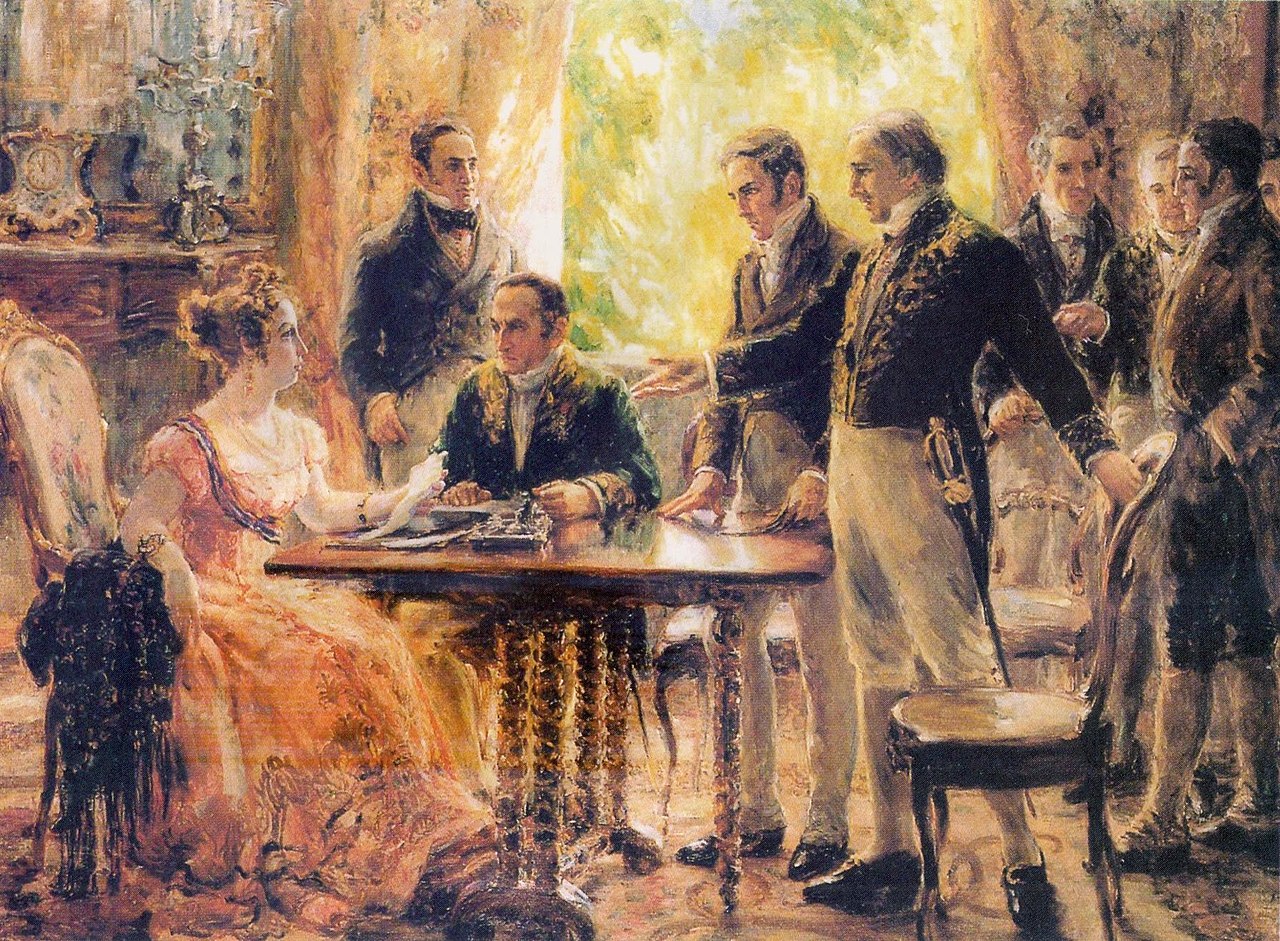by Susan Flantzer © Unofficial Royalty 2019

Archduchess Marie Valerie of Austria, Princess of Tuscany; Credit – Wikipedia
The youngest of the four children of Franz Joseph, Emperor of Austria and his wife Elisabeth of Bavaria (Sisi), Marie Valerie Mathilde Amalie (called Valerie) was born in Ofen (Buda) in the Kingdom of Hungary, then part of her father’s Austro-Hungarian Empire, on April 22, 1868. Empress Elisabeth had a special affinity towards Hungary and wanted this child to be born in Hungary. She had hoped it would be a boy who could be named Stephen after the patron saint of Hungary.

Valerie in 1871; Credit -Wikipedia
Valerie had three siblings:
- Archduchess Sophie (1855 – 1857), died in childhood
- Archduchess Gisela (1856 – 1932), married Prince Leopold of Bavaria, had four children
- Crown Prince Rudolf (1858 – 1889), married Princess Stephanie of Belgium, had one daughter

Engraving depicting Valerie’s family at Gödöllő Palace in Hungary, circa 1870; Credit – Wikipedia
Empress Elisabeth’s first three children had been raised by her mother-in-law, Archduchess Sophie, born a Princess of Bavaria, who was also Elisabeth’s maternal aunt. Elisabeth was never close to her two elder surviving children. An older and wiser Empress Elisabeth decided that Valerie would be hers and hers alone. Her obvious preference for Valerie can be seen by the nickname her mother gave her – die Einzige – the only one.

Valerie and Marie Louise von Larisch-Wallersee in the 1870s; Credit – Wikipedia
Valerie was often in the company of her cousin, Marie Louise von Larisch-Wallersee, the illegitimate daughter of her maternal uncle Ludwig Wilhelm, Duke in Bavaria, who was ten years older and a confidante of her aunt, Empress Elisabeth. Valerie and her cousin Marie Louise spent a lot of time in Hungary, which earned Valerie another nickname, this time one from the Austrian people – the Hungarian child. This affected Valerie, and despite her mother’s intentions, she began rejecting everything Hungarian and spoke only German with her father. She also spoke French, English, and Italian, and loved music and the arts.
During Valerie’s late teenage years, a series of balls were held at Hofburg Palace to which her closest friends and young men attached to the court were invited. At one of the balls, she became acquainted with Archduke Franz Salvator of Austria-Tuscany, who was two years older. Franz Salvator was the son of Archduke Karl Salvator, Prince of Tuscany and Princess Maria Immaculata of Bourbon-Two-Sicilies. Valerie and Franz Salvator were third cousins via their descent from Leopold II, Holy Roman Emperor, King of Hungary and Bohemia, Archduke of Austria and Grand Duke of Tuscany. A possible marriage between Valerie and Franz Salvator began to be discussed.
Empress Elisabeth was in favor of the marriage as it would keep her favorite child in Austria. Emperor Franz Joseph thought it would be better to make a marriage that would give Austria a foreign alliance. Crown Prince Rudolf agreed with his father and thought Franz Salvator was not good enough for his sister. Empress Elisabeth would burst into tears whenever a foreign alliance was discussed. Eventually, Valerie and Empress Elisabeth got their way, and at Christmas 1888, Valerie and Franz Salvator were engaged.

Valerie and Franz Salvator, circa 1890; Credit – Wikipedia
Amid Valerie’s wedding preparations, a great tragedy occurred. On January 30, 1889, at Mayerling, a hunting lodge in the Vienna Woods which her brother Rudolf had purchased, in an apparent suicide plot, Rudolf shot his 17-year-old mistress, Baroness Mary von Vetsera, and then shot himself. After Rudolf’s death, even the mention of Valerie’s marriage caused her mother to burst into tears, but the marriage could not be postponed forever. Valerie and Franz Salvator were married on July 30, 1890, at the parish church in Bad Ischl, Austria. Although the wedding was not a grand Vienna affair, it was still a festive occasion attended by over one hundred members of the Habsburg and Wittelsbach (Bavaria) families and the Bourbon and Salvators from the Tuscan branch of the Habsburg family.
Valerie and Franz Salvator had ten children:
- Archduchess Elisabeth Franziska (1892 – 1930), married Count Georg of Waldburg-Zeil-Trauchburg, who had been the tutor of her brothers, had five children, Elisabeth died from pneumonia
- Archduke Franz Karl Salvator (1893 – 1918), unmarried, died during the Spanish Flu epidemic
- Archduke Hubert Salvator (1894 – 1971), married Princess Rosemary of Salm-Salm, had thirteen children
- Archduchess Hedwig (1896 – 1970), married Count Bernard of Stolberg-Stolberg, had nine children
- Archduke Theodor Salvator (1899 – 1978), married Countess Maria Theresa of Waldburg-Zeil-Trauchburg, had four children
- Archduchess Gertrud (1900 – 1962), married Count Georg of Waldburg-Zeil-Trauchburg, widower of her sister Elisabeth, had two children
- Archduchess Maria Elisabeth (1901 – 1936), unmarried
- Archduke Clemens Salvator (1904 – 1974), married Countess Elisabeth Rességuier de Miremont, had nine children
- Archduchess Mathilde (1906 – 1991), married Ernst Hefel, an Austrian politician, no issue
- Archduchess Agnes (born and died 1911) died shortly after birth

Valerie and Franz Salvator with their children; Credit – Wikipedia
Initially, Valerie and Franz leased Schloss Lichtenegg (in German) in Wels in Upper Austria. In 1895, Valerie and Franz Salvator purchased the Schloss Wallsee (in German) on the Danube River in Wallsee-Sindelburg in Lower Austria from Queen Victoria’s son, Alfred, Duke of Edinburgh and Saxe-Coburg and Gotha. In 1897, after the castle was completely renovated, a gala festival for all the people of Wallsee-Sindelburg was held. The castle is still owned by the family but is not open to the public. Valerie was a devout Catholic and devoted herself to charitable works in Wallsee-Sindelburg where she was known as “The Angel of Wallsee”.
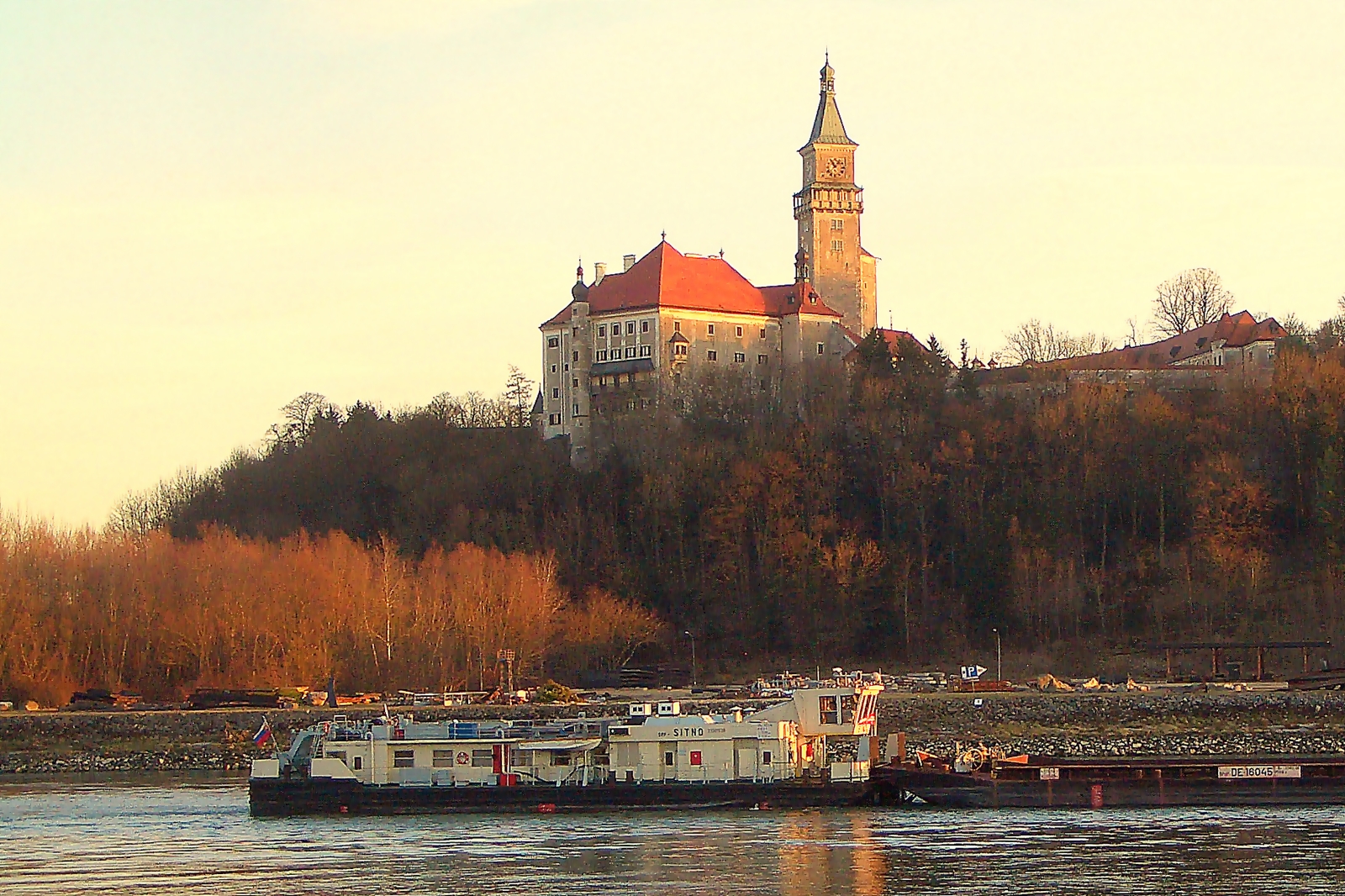
Schloss Wallsee; Credit – Wikipedia
Valerie and Franz Salvator’s marriage was happy at first, but after a while, Franz Salvator had affairs, including one with Stephany Julienne Richter, who became pregnant. Stephany persuaded Prince Friedrich Franz von Hohenlohe-Waldenburg-Schillingsfürst that the baby was his. Friedrich Franz married her, and so she was styled Princess Stéphanie von Hohenlohe-Waldenburg-Schillingsfürst. Her child, born in 1914, was eventually recognized by Franz Salvator as his son.
On September 10, 1898, Valerie’s mother, Empress Elisabeth, was assassinated when she was stabbed in the heart by the Italian anarchist Luigi Lucheni in Geneva, Switzerland. After her mother’s death, Valerie received 40% of her mother’s monetary assets and Hermesvilla, a palace in the Lainzer Tiergarten in Vienna, which Emperor Franz Joseph had given to his wife.

Hermesvilla; Credit – By Bwag – Own work, CC BY-SA 4.0, https://commons.wikimedia.org/w/index.php?curid=57455101
Valerie’s father, Emperor Franz Joseph, died on November 21, 1916, in the middle of World War I, at the age of 86. As he had no son to succeed him, his great-nephew succeeded him as Emperor Karl I of Austria, but only reigned for two years as the monarchy was abolished at the end of World War I. Valerie officially recognized the end of the Habsburg monarchy and signed documents renouncing all rights for herself and her descendants. This allowed her to remain in Austria and keep her home and possessions.
In 1924, Valerie was diagnosed with lymphoma. Shortly before her death, her sister Gisela wrote in a letter, “I must add that I have seen Valerie – fully conscious, completely aware of her condition, and so devoutly accepting, even joyfully anticipating her impending departure, that I believe an unexpected recovery would actually disappoint her.” Surrounded by her family, Archduchess Valerie of Austria died at her home, Schloss Wallsee, on September 6, 1924, at the age of 56. She was buried in a crypt behind the high altar at the parish church in Wallsee-Sindelburg, Austria. Several thousand people followed her coffin to its resting place.
This article is the intellectual property of Unofficial Royalty and is NOT TO BE COPIED, EDITED, OR POSTED IN ANY FORM ON ANOTHER WEBSITE under any circumstances. It is permissible to use a link that directs to Unofficial Royalty.
Works Cited
- De.wikipedia.org. (2018). Marie Valerie von Österreich. [online] Available at: https://de.wikipedia.org/wiki/Marie_Valerie_von_%C3%96sterreich.
- En.wikipedia.org. (2018). Archduchess Marie Valerie of Austria. [online]. https://en.wikipedia.org/wiki/Archduchess_Marie_Valerie_of_Austria.
- En.wikipedia.org. (2018). Archduke Franz Salvator of Austria. [online]. https://en.wikipedia.org/wiki/Archduke_Franz_Salvator_of_Austria.
- Van Der Kiste, John. (2005). Emperor Francis Joseph: Life, Death and the Fall of the Habsburg Empire. Stroud: Sutton Publishing.
- Wheatcroft, Andrew. (1995). The Habsburgs. London: Viking.


